#it might be a January release like PLA was but still!! it’s time that will hopefully go towards giving us a polished product!!!!!
Text
genuinely i am so insanely happy about pokémon legends za this is the absolute best announcement we could’ve gotten for pokémon day
#pokemon#IT’S NOT THE BDSP-IFICATION OF UNOVA WHICH WAS WHAT I WAS DEATHLY AFRAID OF#AND WE’RE GETTING IT *NEXT YEAR* WHICH MEANS THEY’RE LETTING IT COOK#it might be a January release like PLA was but still!! it’s time that will hopefully go towards giving us a polished product!!!!!#also as cool as legends celebi would’ve been. kalos desperately needs another game to help round it out lore-wise#galar is similarly undercooked but that game is recent. kalos is over a decade old (ugh)#also MEGAS ARE BACK#NEW MEGAS MAYBE FOR THE FIRST TIME IN A LITERAL DECADE#hopefully megas in gen 10 too but given how gamefreak seems reluctant to release the terror of megas back on competitive. maybe not#but hey maybe gen 10 will be the nightmare gen where we get every old mechanic back instead of introducing a new one#pour one out for smogon if *THAT* ever happens it would probably murder singles for an entire gen#anyway i am super excited about old France and i will not be shutting up about this ever#if you read the essay in my tags thank you for coming to my ted talk
0 notes
Text
How To Write A Song Called 'Wax Fruit'

The newest Paris Street EP, Brief Feelings, is out now. As I've occasionally done with Paris Street releases, I'm going to spend this week rambling a bit about each song on the EP. Enjoy!
The song: Wax Fruit
youtube
Original song title: ‘The Warehouse Rave Song’. In the early stages of recording this version, it was changed to ‘Ravers’, then to ‘Wax Fruit’.
When was it written? Fuck, man, this thing’s been laying around since 2007.
Where was it recorded? I have an acoustic demo of the original version of this song that is dated January 16, 2008. That was recorded in Nashville, and was actually released as part of the Paris Street Podcast, which I swear to God was a real thing that pre-dates almost all other podcasts (not to brag). I did 13 episodes, presenting new songs and alternate versions of old songs throughout. Is there any evidence at all that this actually existed? Nope. The podcast network disappeared ages ago. Plus, I have a tendency for nuking projects off the internet once I’m tired of them (ask me about The Opening Acts).
Anyway, this song has been laying around for a while, existing in a state of ‘just not good enough’ (musically – I’ve always like the lyrics). That finally changed last year when I rediscovered a short instrumental idea that had been buried in my hard drive since 2019. It was saved under the name ‘Bad Dumb Shit’.
But bad dumb shit turned to good smart shit when I realized that the words to ‘The Warehouse Rave Song’ fit into the music for ‘Bad Dumb Shit’. From there things fell quickly into pla—ha ha, no, this might have been the most agonizing recording process I’ve ever gone through. Love the end result, though.
To answer the question, all this agonizing recording took place in Sacramento.
The instruments: All LMMS for this one.
What’s it about? This is essentially a song about feeling old – about reaching a point where you realize you’re only going to certain social functions because it seems like it’s what you’re supposed to do, even though it’s no longer what you want to do. It’s not really based on any real-life moment – I think I just wanted to use ‘irascible’ in a lyric – although I did go to a party around the time of writing this song that did feature many white kids dancing poorly, ‘the way upper class kids do’.
It amuses me that I wrote a song about feeling old when I was barely 30, with so much more oldness still to come. I’m 46 now, and despite the occasional lower back flare-up, have yet to really feel that oldness (the secret is not having kids - you'll die alone, but your joints will all work and your skin will look amazing).
Anything else to say about this song? I filmed a video for this song but have had way too much going on in my life – good and bad – to find time to edit it. Maybe next week.
Brief Feelings can be found on Bandcamp, Spotify, Amazon Music, and all other streamers of note.
#paris street#brief feelings#wax fruit#how to#songwriting#rambles#indie pop#synthpop#bedroom pop#feeling old#white kids#lmms#bad dumb shit#Youtube
0 notes
Text
China's Xi Jinping only wants the most devoted cadres. His tough membership rules could backfire
China's Xi Jinping only wants the most devoted cadres. His tough membership rules could backfire

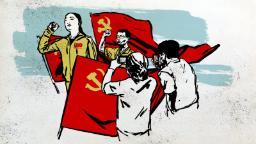
Since childhood, the 20-year-old student had wanted to join the longest-running and largest communist party in the world, having grown up hearing “red tales” of its revolutionary past from her family.
In recent years, as she embarked on the long journey to become a member of the Chinese Communist Party, she had balanced hours of lectures on party ideology with course work for her biology degree, and spent 30 minutes a day on a nationalist app reading articles and watching videos.
Her latest challenge was to impress local party members.
Hu, along with 12 other young hopefuls, presented a report on her family background and how her thoughts, studies and life had improved since receiving party training. Next, she fielded questions on her respective shortcomings — for Hu, gaps in her knowledge of party history and being too strict with team members — before being sent out of the room so the members could vote on their fate.
All of them were accepted.
“When they announced that I had become a probationary party member, I was very happy, but the atmosphere was so solemn you couldn’t show your happiness,” said Hu, who is not using her real name as she is not authorized to speak to media, of the June meeting in southern China, where she studies. “You had to appear calm and couldn’t even clap.”
Hu will now spend a year as a probationary member, meaning she must perform the duties of a full member without the right to vote in party elections. At the end of the year, her local branch will decide whether to admit her to the party, which has grown from just 53 members when it was founded 100 years ago to more than 95 million.
In the past, Hu could have been a fairly silent member of the party, with little involvement in its politics. Many members simply joined because their families told them to, or because they wanted a leg up in China’s highly competitive job market, and might not be fervent believers in party ideology.
But that is changing.
Chinese President Xi Jinping, whose real power derives from his position as the head of the ruling Communist Party, has placed more emphasis on quality over quantity. He has demanded absolute loyalty from party members, launched an ideology drive to shore up their faith, and unleashed a crackdown on internal dissent. Members are bound by more stringent rules — and millions of cadres have been investigated for violating them in the past nine years since Xi took control of the party.
They are also joining at a time when the party is facing increased scrutiny overseas. The Chinese government has faced international opprobrium over its alleged human rights abuses in Xinjiang, crackdown on Hong Kong and military expansions in the South China Sea. Its foreign policy has grown increasingly assertive, straining already deteriorating relations with Western nations and some of its neighbors.
Those who still aspire to join face tighter rules and more requirements once they become members, as the party aims to weed out applicants joining for self-interested reasons, leaving only the most devoted members — like Hu.
What it takes to join
Hu’s journey to become a party member began in September 2019 with a five-page, handwritten letter.
In it, she detailed why she wanted to join the party and how her actions aligned with its ideology. When the local branch released a list of potential names for membership, giving the public a chance to raise objections, she was on it.
After passing that hurdle in April last year, Hu began attending party lectures, which she was required to submit handwritten notes to ensure she was paying attention. Each day she spent half an hour on the Xuexiqiangguo app, which teaches Xi’s ideology and translates literally to “study the powerful nation” or — as a word play — “study Xi to empower the nation,” a sign of Xi’s growing personality cult.
Xi’s doctrine was written into the party’s constitution in 2017, making him only the third Chinese leader to have his eponymous political philosophy enshrined in its theoretical pantheon.
Every few months, Hu handed in a handwritten self-reflection report on how she had served the people and improved herself. Meanwhile, local branch members vetted her through her teachers, classmates, and even people she didn’t know very well.
“Every layer of evaluation and selection is very strict,” she said. “For every evaluation, the party branch will go to the masses to learn about how you are in real life, instead of merely listening to your own reports.”
It’s tough to gain admittance — about 12% of applicants nationwide were accepted in 2019, according to party data.
Already, Hu says the process has changed her. She says she spends a lot of time attending activities organized by her local party cell, which range from watching patriotic movies to doing volunteer work, such as cleaning school laboratories and teaching kindergarten children.
Xiao Ya, 21, a probationary party member in the southern city of Guangzhou, said when she first applied, she didn’t think too much about it. Everyone around her was applying to join, so she submitted an application, too.
“I merely followed the crowd,” said Xiao Ya, who is also using a pseudonym to protect her identity.
Soon, the party was taking up a large chunk of her life. She volunteered for marathons, and went to a remote, mountainous part of Guizhou province to teach in an ethnic minority village. Although the school had concrete floors and old desks, it had advanced projectors and computers which the principal told her were paid for by the country’s poverty alleviation policy. She felt the government had helped rural communities a lot.
“I feel like I should learn from the party and improve myself to better serve the people,” she said.
Both Xiao Ya and Hu have been subject to Xi’s tougher requirements on new recruits, which were introduced in 2014.
Although being admitted to the party has always involved a rigorous selection process, there are now even more demands. The hope is raising the barrier will keep people who aren’t serious out.
A decade ago, a rank-and-file party member would have only minimal requirements, such as attending one meeting a year and paying dues. Now, under Xi, there are more meetings and volunteer work expectations, said Bruce Dickson, a professor of political science and international affairs at George Washington University and an expert on the Chinese Communist Party. According to Dickson, one of his friends, who is a party member, says they have to study every new speech Xi gives.
“There are more demands — especially on people’s time — than there have been before,” Dickson said. “If you’re not going to be willing to step up for the party, then (Xi) doesn’t really want you in it.”
Over the past five years, fewer people have been admitted to the party, perhaps because there’s less interest in joining or a higher level of scrutiny on potential applicants, said Dickson.
Nis Grünberg, a senior analyst from the Mercator Institute for China Studies who researches state-party governance, echoed that statement. He said the party wanted “true believers” and was “trying to kind of weed out all those who use it to access networks and power.”
Xi wants a powerful party that he can quickly mobilize when needed. Since rising to power, he has reasserted the party to the center of Chinese life, doubled down on strengthening party building, and revitalized once-dormant grassroots party cells in companies and local communities.
Why people join the party
Julian Li, who is in his late 20s, grew up in a military compound, where a portrait of Mao Zedong hung in his house. During the Cultural Revolution, his grandfather worked for the People’s Liberation Army (PLA), escorting persecuted people to the countryside. His father worked for the government in Beijing, and hoped Li would follow his lead.
His party membership was almost a foregone conclusion.
At 18, Li, who asked not to use his real name to protect his family, joined the party — not because he was especially interested in being a member or working for the government, but to please his father. He didn’t even write his own application letter — his father’s secretary prepared the materials for him.
Li’s parents hoped party membership would help his career — a reasonably common rationale for joining, according to Dickson.
When the party was founded 100 years ago, its members were urban intellectuals — blue-collar workers didn’t read much Karl Marx, the German theorist whose ideology helped shaped that of the early party, Dickson said.
Under Mao, the founding father of the party and the People’s Republic of China, however, peasants were recruited. Membership soared from 4 million when he created the communist nation in 1949, to 35 million in 1977, shortly after his death.
After Jiang Zemin took over the party and presidency in 1989, he brought in a political doctrine that welcomed private business owners and the middle class into the fold.
As China’s economy boomed, recruitment shifted back to the urban elites, best-placed to help the country grow. Each year, the best and brightest are recruited. Of the 4.7 million new members accepted between January 1, 2020, and June 5 this year, 1.9 million — or 40% — were students, according to party data.
For some, that has allowed the party to double as an excellent networking club for the country’s most amibitious young professionals.
A master’s student in his 20s in Beijing — who asked not to be named for privacy reasons — said he was recruited in his senior year of high school. The headteacher of his class thought he was qualified because he was the vice class monitor, a student with additional responsibilities. “I regarded it as the mark of an excellent student,” he said.
In state-owned companies, party members typically hold positions of authority — and even in private firms, there’s a notion party members are well educated and “don’t have skeletons in the closet,” Dickson said.
“Almost in any sector you’re in, there’s a glass ceiling if you’re not a party member,” he added. There are exceptions to this — although Alibaba co-founder Jack Ma is a party member, neither Pony Ma, founder and CEO of Tencent, nor Baidu co-founder Robin Li are members.
Using party membership simply as a way to get ahead is something Xi wants to stop. Instead, he wants cadres to believe in his doctrine.
“He’s clearly made a big emphasis that party members have to be loyal to the party above all else,” Dickson said.
Three recruits CNN spoke to for this story said they joined for ideological reasons. In today’s China, publicly voicing other reasons would be controversial and potentially jeopardize their membership.
Party member Xiao Ya says she didn’t join for career purposes. Although she thinks members may be more likely to get promoted at work, she believes membership alone is not that useful for finding a job — but it could be for those wanting to work in public service.
As for the master’s student, he says there are many people who believe in communism in the party — but there’s a range of motivations, and so long as people aren’t motivated purely for selfish reasons, that’s fine, he said. “Different people with different motives can join the party and we don’t exclude you for having other ideas,” he said. “We accept multiple motives and don’t require everyone to be 100% pure and noble.”
The effect of joining the party
Now working in finance in London, Julian Li says his party membership has little impact on his career or life, apart from making his move to the United Kingdom slightly more difficult.
When he applied for a UK visa, he said he needed to declare he was a party member and whether he had handled any confidential information in China.
“I found that very troublesome,” he said, adding he was annoyed he had to take another step for holding a membership he didn’t want in the first place.
Overseas, party membership often carries stigma. When public figures are revealed to be members, that’s seen as a cause for concern. When the United States introduced immigration rules introduced last year to curtail travel for party members, US authorities said they were imposing travel restrictions “to protect our nation from the party’s malign influence.” These concerns have been heightened by recent accusations of espionage connected to Chinese officials and researchers linked to the Chinese military.
In the past, the way some Western media and politicians have portrayed party membership has been unfair, says Grünberg, the senior analyst.
Many members were simply patriots — and it wasn’t appropriate to suspect every one of being a Chinese agent. “It’s exaggerated if you portray all party members as just one monolithic big group of people who try to influence when they’re abroad,” Grünberg said.
“Just being a party member doesn’t make you a cheerleader for the regime.”Bruce DicksonA professor of political science and international affairs at George Washington University
and an expert on the Chinese Communist Party
Dickson also sees that as a “misreading” of what membership implies. “Of the almost 95 million people who are in the party, less than 10% actually have official positions,” he said.
“Just being a party member doesn’t make you a cheerleader for the regime.”
But Xi’s demand for the absolute loyalty of party members has also made them a target of suspicion, as they’re required — at least officially — to always toe the party line and serve its interests.
For Julian Li, or others tired of the increasing demands and problems overseas, quitting isn’t really an option.
Some people are kicked out — and the growing push to stamp out bad apples means punishments are exacted more often.
“The system is really looking more carefully, and in more detail at what people do and how they behave,” Grünberg said.
But if someone wanted to leave the party of their own accord, it’s unclear how they might do that and what kind of consequences they might face. Although there was talk early in Xi’s presidency about cleaning out inactive members, that idea was dropped after it became clear how many people might quit, Dickson said.
“Once they realize how many people might take them up on that opportunity, and once they realize how much the party might shrink as a consequence, they decided it wasn’t worth the trouble,” he said.
That means the party must strike a balance between having the best-educated elite, and still being broadly representative of the general population, so it doesn’t become out of touch, Grünberg said.
“You don’t want too many in the club,” he said. “I think they firmly believe that they have found a good mix of both trying to get elites and the most capable people, but also staying a little in touch with the reality that is different around China.”
What party membership will mean in the future
While Xi’s tightening of rules raises the possibility that party membership will mean more, experts say the obligations of members will need to not outweigh the benefits if the party wants to keep attracting talent. In 2013, the party set an annual growth target of about 1.5% over the next 10 years, according to Hong Kong newspaper the South China Morning Post.
If members have to spend a couple of hours a week in study sessions, it seems like an “anachronism” that harks back to a different era when people lived simpler lives, Dickson said, adding that some people may decide it’s not worth the trouble.
“It’s just eating up more of their time, which is frustrating,” he said.
It’s also possible that Xi’s tough rules both for being accepted, and for current members, won’t continue and were merely in place in the lead-up to the party’s centenary, which fell on July 1.
“It just seems so out of step with the current situation,” Dickson said. “Xi is trying to make loyal party members out of all party members, and it’s not clear it’s going to have that much success because people are leading busy lives.”
If people are force-fed a routine, “it doesn’t build loyalty, it builds resentment. So it could very easily backfire,” he added. “If the best and brightest don’t want to join the party, they may have to reassess this emphasis on loyalty.”
.
Source link
0 notes
Photo

“Afisha Daily” talked with Foals leader Yannis Filippakis and learned that journalists are always misunderstood by him.
AD You not so long ago recorded with the legendary drummer Tony Allen. How did this happen?
YP This, in general, is not my project. I was invited to sign up with him, and I arrived in Paris for a few days, this was last year. And then again came, already in January. We recorded track four together. I think that some of them will eventually come out on his next album. But you can not make a guess, he’s written with a lot of different musicians, and all this somehow needs to be organized … In a word, there’s very little that depends on me and, as I understand it, there’s still a lot of work. A couple of tracks, probably, will not fall into the album - maybe we’ll reduce them and release them on the next LP Foals. We will make our own album of collaborations. We can do this, but we can do it differently - it’s not sextape, where everything should end in a certain way.
But do you have any idea how this will sound?
Well, that sounds like Tony Allen’s collaboration might sound.“ (Laughs.) I sing in some songs. All the drums are his, naturally. A couple of songs came out of those drafts that I wrote back at the time when Foals were working on “What Went Down”. There are tracks in which you can hear me more. There are pieces where just a jam session in the studio is recorded. It’s hard to say what will come of it and when it comes out. But I think in some form you’ll all hear it.
- You also said recently that this summer Foals will play old songs that have not played for a long time. Why suddenly this reboot?
Optional old songs will be from the recent albums - just those that we did not play. I want a variety, and, frankly, we do it for our own pleasure. I do not want to start a new tour with the same program that was last time. And then we have fans who have been with us since the first days, and they, probably, also want to hear songs that we have not played for a long time - and we have accumulated a lot of such things.
- That is, there is no big plan for rethinking yourself? Many people resort to this method: to play some old album in order to buy time and understand where to move further.
No, nothing like that, believe me. Familiar songs to all we will also play, we just dilute them with those that are not so often played.
Anyway, you have memorable concerts. I remember how at the festival in Gorky Park you came down from the stage and went to the people with a guitar. And there was a feeling that if it were not for a guitar cord, you would have gone like this into the sunset. Do you still make such long walks during performances?
That, for sure, was the longest, because the audience was far away.Usually they are closer, so I decided to go. And in general, yes, I go.That is, we have not given concerts for the last six months, but in general this is part of the show - physical unity with the public.Why not do it?
- And with what feelings do you go on tour? Are some crazy things repeated from time to time?
Touring as a whole is a crazy thing. We often do not know where the scene is, or we are late for some reason. And what happens on aftere-play is hedonism, which helps you to relax in order to survive the touring schedule in general. Then we had our Beatles episodes, when people in Russia or in South America are on duty at the hotel windows. That is, these are rather tense situations, although they should be treated with humor. If you think about it, the tour itself is an absurd thing. Because in normal life, all this does not happen.
- In my opinion, people still do not know very well how to define Foals. I spoke with Jimmy Smith (guitarist of the band) three years ago, and he told me that before the Foals began to compare with Talking Heads, he did not hear Talking Heads at all. How often do you get the feeling that you are not quite rightly understood as musicians?
Often, but this is a normal situation. We play very contradictory music, as it seems to me. We are a popular band, but with a lot of sharp corners. Often we do exactly the opposite of what is expected of us - and what we ourselves expect of ourselves. In the sense of self-presentation, we are doing extreme things. In the end, we sometimes do not understand why we are doing something. And we do not want to understand. Sometimes you just need to trust your intuition. We need an internal conflict: when you want one, and do something else. So it turns out that we have experimental music, and there are pop songs, there is “Spanish Sahara”, and there is “What Went Down” (and they are quite different stylistically). Therefore, we are no longer surprised when in one day we read two publications about ourselves - and these two texts contradict each other
Yannis Philippakis || Interview || Afisha Daily
translated excerpt
#yannis philippakis#interview#fest 2017#actual reading#*wow i forgot to translate assist and this is pretty bad#oops
5 notes
·
View notes
Photo

Military And Intelligence News Briefs -- January 24, 2019 http://bit.ly/2TdIoB0
The cost of the nuclear arsenal will be almost $500 billion over the next decade. (USAF)
Defense News: Here’s how many billions the U.S. will spend on nuclear weapons over the next decade
WASHINGTON — If the U.S. carries out all of its plans for modernizing and maintaining the nuclear arsenal, it will cost $494 billion over the next decade, an average of just under $50 billion per year, a new government estimate has found.
The number, part of a biannual estimate put out by the Congressional Budget Office, is 23 percent over the previous estimate of $400 billion released in 2017. That 2017 figure itself was a 15 percent increase over the 2015 numbers.
The number will likely grab attention in Congress, especially on the House Armed Services Committee, where new chairman Rep. Adam Smith, of Washington, has made clear he will be looking for ways to save money by cutting nuclear costs.
Read more ....
Military And Intelligence News Briefs -- January 24, 2019
US Upgrade of Nuclear Forces to Cost More Than Expected -- Sputnik
With days to go before deadline, nuclear treaty seems doomed -- Defense News
Work completed on Navy’s upgraded nuclear warhead -- Defense News
End of an era: Navy’s legacy Hornets to fly off into the sunset -- Navy Times
U.S. Air Force tests microwave, laser weapon systems -- UPI
Why the F-22 Raptor and F-35 Stealth Fighters Will Revolutionize War -- Sebastien Roblin, National Interest
The U.S. Navy Is Building a Swarm "Ghost Fleet" -- National Interest
Zumwalt-class destroyer Michael Monsoor to be commissioned Saturday -- UPI
2 soldiers dead, several others injured in vehicle accident during training at Fort Bliss -- Army Times
Report: Army’s new modernization command risks cost overruns and delays -- Army Times
Marine Corps Builds New Amphibious Combat Vehicle for "Deep Strike" Attacks -- National Interest
Boeing's first autonomous air taxi flight ends in fewer than 60 seconds -- CNN
Women in the military draft, or dump the system altogether? New report looks at radical options -- Defense News
Chinese, Russian Anti-Satellite Tech Puts US ‘Space Assets at Risk' - Report -- Sputnik
Can Big Data Save Old Warplanes? -- Popular Mechanics
Does America Still Need the Nuclear Triad? -- Kyle Mizokami, Popular Mechanics
Here’s why 22 Republicans voted against blocking Trump from NATO pullout -- Defense News
Russian defense firm developing new air-and sea-launched missiles -- TASS
Russian air-launched weapons proved their worth in Syria, says defense contractor -- TASS
Kalashnikov Concern Plans to Start Production of NATO-Standard Assault Rifle -- Sputnik
Chinese missile drill tests ‘ultimate symbol of PLA destructive potential’ and sends message to the US -- SCMP
Chinese military flies Su-30 fighter jet, Y-8 surveillance plane close to Taiwan in latest show of strength -- SCMP
Chinese Military Aircraft Flexes Muscles Flying Near Taiwan -- Sputnik
US says China’s growing military might is part of a ‘diverse’ threat to its national security -- SCMP
US warships sail through the closely watched Taiwan Strait, turning up the pressure on Beijing -- SCMP
South Korea discloses images of low-altitude Japanese flight -- UPI
S. Korea-based F-16s deploy to Philippines to ‘deepen relationships’ with nation’s military -- Stars and Stripes
Germany demands Russia verify its commitment to INF missile treaty -- DW
German navy returns to treating the Baltic Sea as a potential theater of war -- Defense News
Several EU Member States Considering Creation of EU Space Forces - Commissioner -- Sputnik
Swedish army orders Rheinmetall trucks for Patriot missile systems -- UPI
Military buildup in Arctic as melting ice reopens northern borders -- The Guardian
from War News Updates http://bit.ly/2FMKnte
via IFTTT
0 notes
Text
Fire Emblem Chronicles Vol. 1: Fire Emblem: Mystery of the Emblem
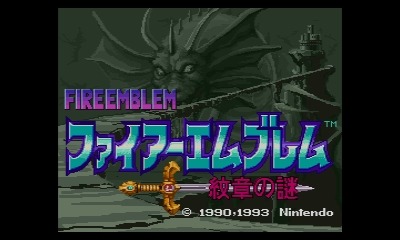
Original Release Date: January 21, 1994
Original Hardware: Nintendo Super Famicom
With Fire Emblem Gaiden maintaining solid sales even in the face of a waning Famicom market and some pushback over its design decisions, it was a certainty that the series would continue. While its cousin Famicom Wars had jumped over to the Game Boy, Fire Emblem would get a shot at the console big leagues. Now, it's important to remember that although most fans think of Intelligent Systems as a game developer first and foremost, they've also historically been instrumental in developing software tools and assisting Nintendo in various other hardware-related capacities. As such, they don't tend to release a lot of games around the launch of new Nintendo systems, since they're occupied with their other work. That has become less of a problem over time as Intelligent Systems has grown and Nintendo has relied on less proprietary hardware and software. During the first few generations of Nintendo hardware, however, Intelligent Systems games usually arrived late in the generation.
Fire Emblem: Mystery of the Emblem certainly released late in the Super Famicom's life, but it was less of a problem this time than it had been with the previous two games. While the SEGA Saturn and Sony PlayStation would launch in December of 1994 in Japan, they took a little while to catch on. Nintendo wouldn't have their Super Famicom replacement ready until late 1996, and in 1994 that successor was very much just sketches on a napkin as far as most Nintendo fans were concerned. No, the Super Famicom market was essentially in its prime in 1994, and with Fire Emblem now an established brand it was well-positioned to take advantage of that. Fortunately, Fire Emblem: Mystery of the Emblem turned out to be just the right product for its time and place, and it ended up being the best-selling game in the series until Fire Emblem Awakening arrived nearly 20 years later. Mystery of the Emblem ended up selling more than 770,000 copies in Japan, more than the first two games combined.
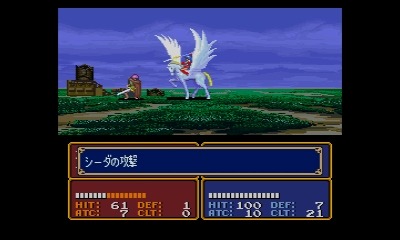
The plum release date surely assisted with that, but the game itself was well-suited for success. After Fire Emblem Gaiden's numerous changes from the first game received a mixed response, series creator and director Shouzou Kaga opted to roll things back in Mystery of the Emblem rather than try to fix what wasn't working. He did that in more ways than one. First, Mystery would return to the setting and characters of the first game, with Marth once again taking the spotlight. Second, most of the mechanical changes in Gaiden were discarded, with the support system being the only real survivor. Finally, perhaps in deference to Fire Emblem's late arrival on the Famicom, Mystery of the Emblem would include an abridged remake of the original game in addition to a full-length sequel. Newcomers could get to know the world and its characters without having to dig out their old hardware, while fans of the series could either enjoy revisiting the original game with a whole new presentation, or dive directly into the new content.
By including this remake of the original, the development team ended up running into memory issues yet again. This didn't interfere with the sequel content (referred to as Book 2), but some cuts had to be made to the remake (called Book 1) to make it fit. While the initial plan was to make it a complete remake, Book 1 ended up having to cut a handful of characters and stages. To be honest, it's not a huge loss. Having it all would be better, but you get most of what was good content-wise in the original game. Although the remake makes use of the new engine and all of its rules, the changes are quite slight. Mystery of the Emblem feels like it's playing things very safely after the criticisms of Gaiden. Its success through this conservative approach set down a template that the series had some trouble getting away from in the future, and it would nearly be the death of the franchise.

That said, there's a lot to appreciate in Mystery of the Emblem. The support system from Gaiden that was limited to Alm and Celica alone was greatly expanded here. While we're still pretty far away from the support conversations that have taken center stage in recent releases, multiple characters in Mystery of the Emblem have pre-existing relationships that convey combat bonuses when they're positioned near to each other in battle. This gives you a practical reason to pay attention to the story and lore, as knowing who gets along with who can give you a tactical advantage. This was an important step towards creating the shape of the series as we know it today.
Another highly welcome new feature is the game displaying movement range when a unit is selected. You no longer need to push along with the cursor to see where you can or can't go. The UI in general is a lot friendlier and easier to use in this game compared to the previous games. The game gives you access to your storage and character inventory in between stages, allowing you to easily pass items around and set up as you see fit. Fire Emblem would make major strides in this capacity in the next few games, but it's far enough along here that I think most people would feel somewhat comfortable going back to it. You still have to decide on your own whether or not it's a good idea to attack a unit and what the probabilities look like, though.

The other big change in Mystery is one that only ended up appearing in a few games before disappearing. Mounted units are now able to dismount, and indeed are forced to in stages that take place indoors. Depending on whether they're mounted or not, they'll only have access to particular weapons. While on their steeds, they have to use pole arms, while on foot, they're limited to swords. The idea isn't bad, and it makes a lot of sense from a certain point of view, but it ended up blurring the lines between job classes and making a mess of managing inventories. Later games would address the whole problem of horses in-doors by giving them a movement penalty instead. Kaga was clearly fond of dismounting, however, as he made sure to include it in Tear Ring Saga after he left the Fire Emblem franchise.
Naturally, with the move to 16-bit hardware, the presentation got a real kick in the pants. I don't think Mystery of the Emblem looks particularly good for a 1994 Super Famicom game, but it doesn't look bad, either. Series composer Yuka Tsujiyoko got a lot of mileage out of the improved sound capabilities of the hardware, too. With more memory to work with, the development team was able to add in a lot more information and story for all of the characters, giving the game a much more well-rounded feel. The story of Book 2 also does some interesting things, making one of your trusted playable allies from the first game into what appears to be the main antagonist. It ends up explaining his turn through supernatural means, but it's honestly plausible on its own without any of that silliness. While fiction tends to treat friends as a forever thing, real history shows that war-time allies often become enemies and vice-versa.
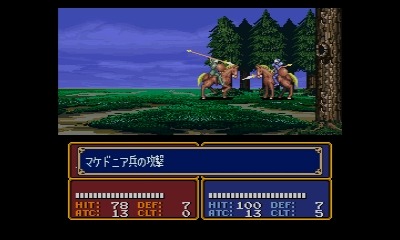
The maps and scenarios are well-designed as usual, and recruiting new characters once again largely occurs through conversations on the battlefield. While that can be stressful at times, I think it's an important part of what makes Fire Emblem distinct from other games in this genre. You can't simply put your strongest units forward and roll over the enemies, because one of them might need to talk to someone in the back ranks to join your side. You have to figure out how to get that potentially vulnerable unit into the middle of a group of enemies and extract them, which is a nice challenge. Recent games tend to compromise on this by having potential recruits be distinct from enemy forces, which I think accomplishes a similar goal. It's a little weird that certain units are so willing to fight Marth when they were once apparently his loyal friends, but I suppose the game's story can explain away whatever the characters don't. Marth is treated like a dangerous rebel, and I suppose some fools would believe that, considering the source.
With the massive success of Mystery of the Emblem, it was inevitable that Fire Emblem would get another release on the Super Famicom no matter how late it was in the system's life. What was more unexpected was that the 16-bit platform would play host to two more installments, with the last of the bunch releasing in late 1999. That's nearly a year after the Japanese release of the SEGA Dreamcast. That partly explains why the momentum and goodwill generated by Mystery of the Emblem was so short-lived. But I also feel like Kaga had his own ideas about where he wanted to take the franchise, and that might not have been compatible with Nintendo's view of things. As we'll see over the course of the next couple of articles, Kaga wasn't very interested in keeping Fire Emblem in a holding pattern, and I can't help but wonder if Mystery's unusually safe approach and the overwhelmingly positive response it received bristled him.

Whatever the case, Fire Emblem: Mystery of the Emblem holds up quite well to this day, and I would strongly recommend playing it were it not for one little thing. Namely, the two Books that make up this game have both received individual remakes that significantly fleshed them out. Fire Emblem: Shadow Dragon for the Nintendo DS managed to get an international release, and outside of its bland art, it's the best way to experience that particular story. Fire Emblem: New Mystery of the Emblem was also remade for the Nintendo DS, but it never got released outside of Japan. It makes some fairly significant changes to the story, but in terms of gameplay, it's by far the best way to enjoy Mystery. Of course, since Nintendo is yet to provide English players with any official means of playing this installment, it's somewhat inaccessible in either form. I imagine Nintendo will do something about that someday, but likely not soon.
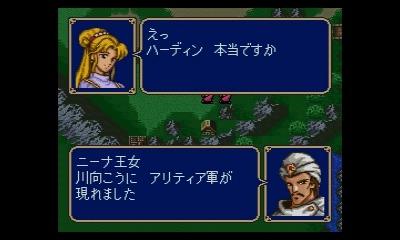
Previous: Fire Emblem Gaiden
Next: Fire Emblem: Genealogy of the Holy War
If you enjoyed reading this article and can’t wait to get more, consider subscribing to the Post Game Content Patreon. Just $1/month gets you early access to articles like this one, along with my undying thanks.
#fire emblem chronicles#fire emblem#fire emblem mystery of the emblem#gaming#retro#super famicom#intelligent systems#rpg
1 note
·
View note